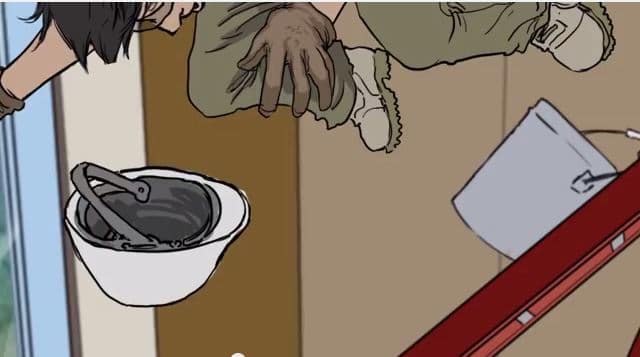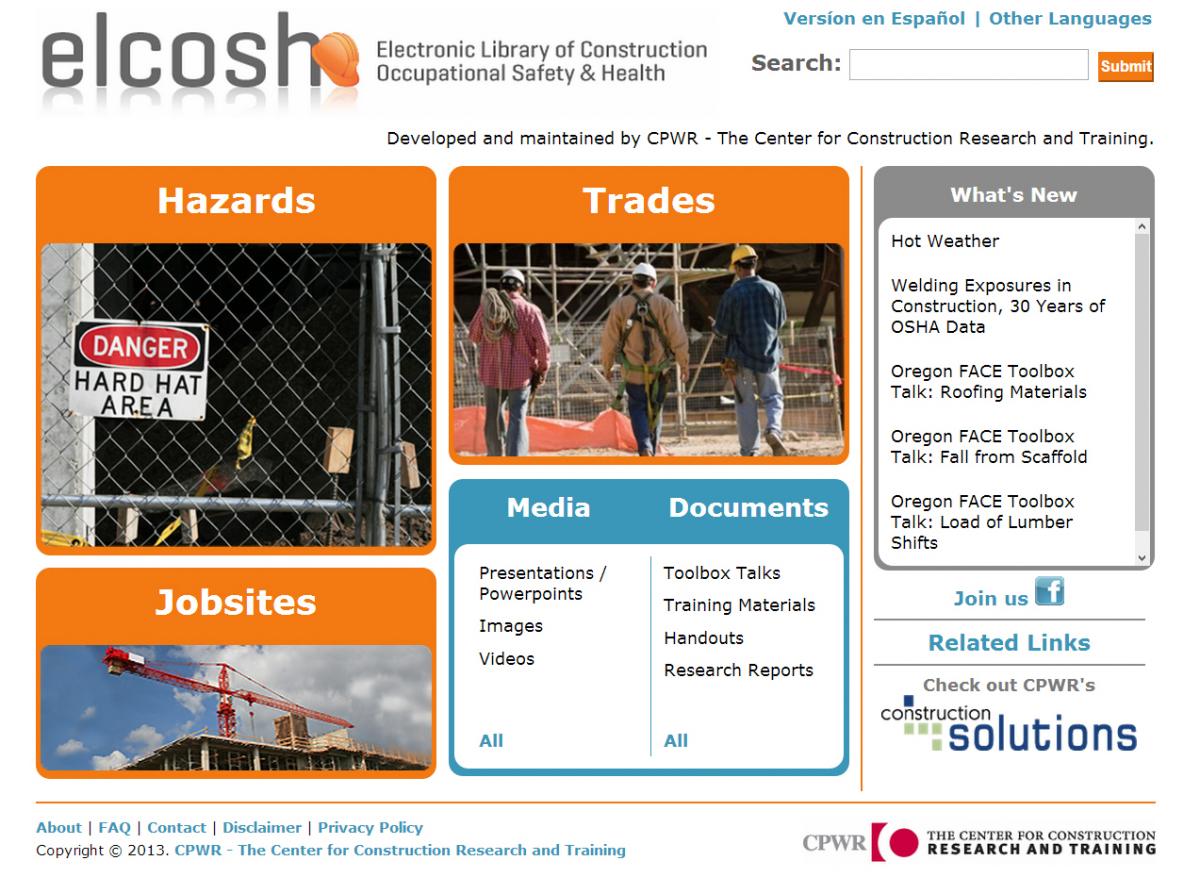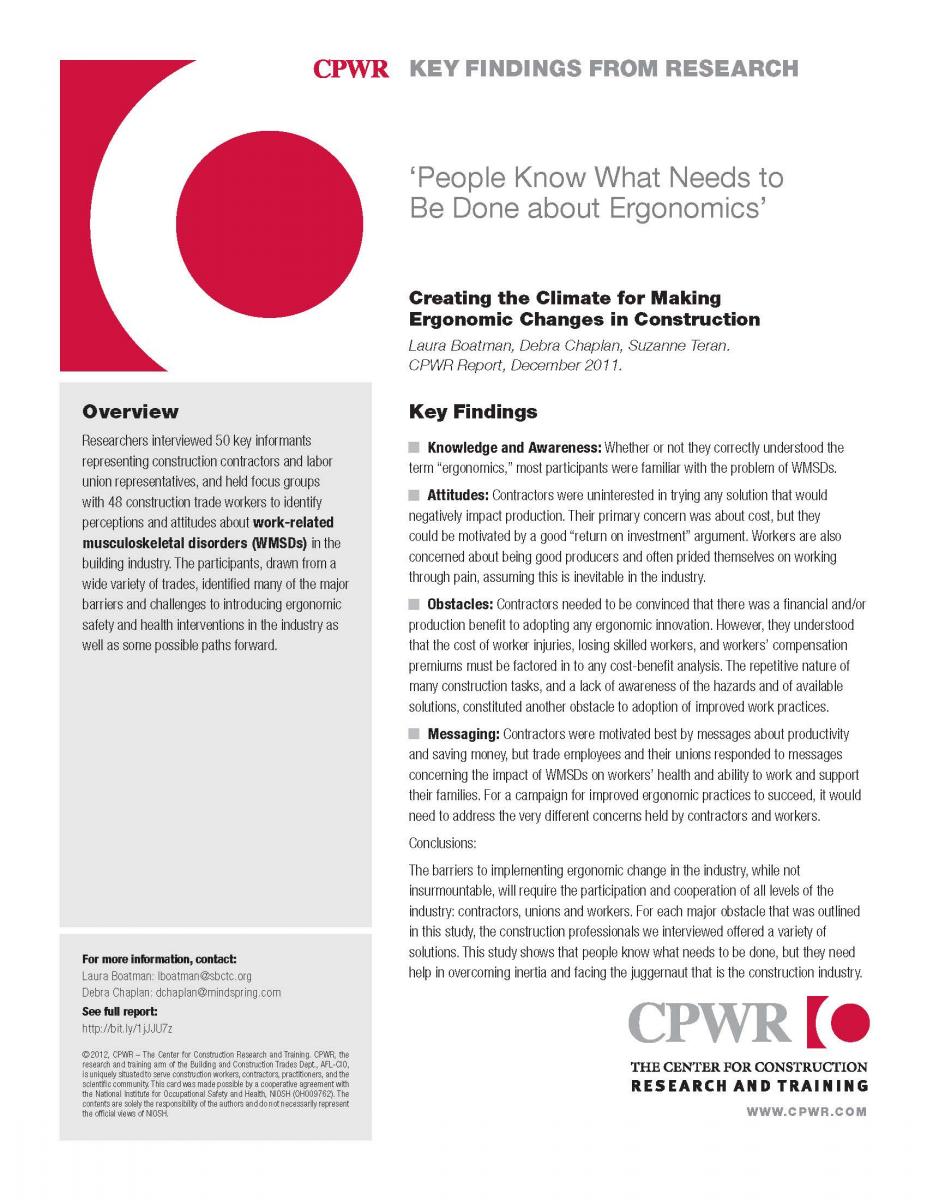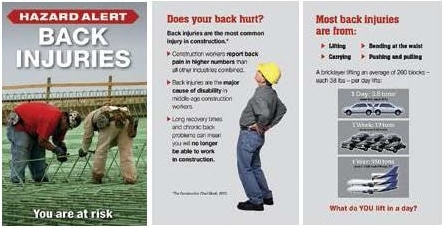Dissemination / Communications (Completed – 2009-2014)
Mary Watters, MFA
CPWR
Ph: 301-578-8500 ext.8523
[email protected]
Visualizing Safety: Creating Materials with Impact
Good research that goes nowhere can’t help anyone. The Communications Department’s task is to disseminate the findings, tools and products of CPWR researchers and ensure they reach audiences that can take action to make workers safer on the job.
An important way to reach those audiences is the trade press – commercial publications that serve construction contractors. Through targeted and tailored outreach to these publications, CPWR earned at least 50 stories in newspapers and trade magazines in the 2012 grant year, including three stories in McGraw-Hill’s Engineering News Record, the industry powerhouse. Nine of these articles were authored by CPWR researchers so they could speak directly to contractors in the pages of publications like Equipment Today, Rental Equipment Register, Occupational Health and Safety, and EHS Today.
Another 20 of the articles were generated from stories appearing in our monthly e-newsletter – the CPWR UPDATE – avidly read by a growing roster of industry opinion leaders. The newsletter, which began two years ago with a distribution list of fewer than 1,300, is now delivered monthly to more than 2,300 subscribers spanning the government, contractor, union, academic, and media worlds. (Are you subscribed? You should be.)
The fifth edition of CPWR’s flagship reference publication, The Construction Chart Book, appeared in April 2013. The department guided design and production of the book from Word files and Powerpoint slides to its final form. The department’s publicity efforts broke past distribution records, exhausting almost the entire print run in a single year and feeding the year’s highest web traffic to the book’s online home at www.cpwr.com.
Meanwhile, continuing an effort from 2011, the department updated and printed seven more new image-driven Hazard Alert cards for safety training. The folding pocket-size cards cover topics like ladder safety, noise and the new Hazard Communication symbols. The renovation of these cards, combined with targeted promotion to contractors and union safety trainers via email and postal mail promotions, caused demand for the cards to skyrocket. From 2010-2011, CPWR received only three external requests for a total of 1,052 cards; in 2012-2013 we received 145 external requests for 51,208 of the cards.
CPWR’s website got a new look, when the redesigned site was launched in late September. Changes to the structure plus the image-driven Publications section have improved the user experience.
And yet, there was much more, such as our restructured eLCOSH.org, which made its debut in October 2012. Its new navigation system has proven popular with users who enter from its home page and use its search tools to access materials in this free national repository of construction safety and health
information. In 2013, the site broke 15 million pageviews since its launch in 2000. In the social media world, the eLCOSH Facebook page has developed an avid community of active followers and more than 10,000 Facebook users “like” the page.
- The eLCOSH redesign was only one month old in November 2012, but it significantly boosted use of the search functions. Unique visitors to the eLCOSH home page increased by nearly 50% and visits to eLCOSH that began on the home page nearly doubled.
- The eLCOSH site received 556,275 visits in the program year 2011-2012.
Our new e-newsletter, the CPWR UPDATE, has rapidly become a critical source of information for opinion leaders in construction occupational safety and health. Distributed monthly to more than 2,000 recipients in business, academia, government, labor and the media, the UPDATE keeps key stakeholders abreast of major findings and new CPWR publications and products. The UPDATE has also become a trusted source for the trade press, with stories frequently appearing in industry magazines and in dozens of electronic newsletters. At least 26 stories published in the trade press can be traced to the UPDATE since its September 2011 debut. Overall, 2012 was a banner year for CPWR in the industry press, with 48 documented appearances in trade outlets – triple the number identified in the prior year.
- Twelve issues of CPWR’s UPDATE, the e-news publication received by more than 2,300 subscribers.
- One Chart Book published in print and online; 1,458 hard copies distributed.
- A podcast highlighting The Construction Chart Book, in cooperation with American Painting Contractor magazine, which used CPWR’s article about the book as its cover story.
- Seven new “Key Findings from Research,” a one-page document summarizing the results of a CPWR study or peer-reviewed
journal article in a readable, bullet-point handout. - Organized and promoted two webinars in cooperation with OH&S magazine: one for the Campaign to Prevent Falls in Construction and one introducing the Silica-Safe website.
- Three videos turning NIOSH FACE reports into short (2-3 min.) stories showing the hazards on the site, animating the fatality
and illustrating the NIOSH investigator’s recommendations identifying what should have been done to prevent the tragedy. - Nine trade magazine articles written and placed.
- Coverage of CPWR in at least 45 trade magazine articles.



